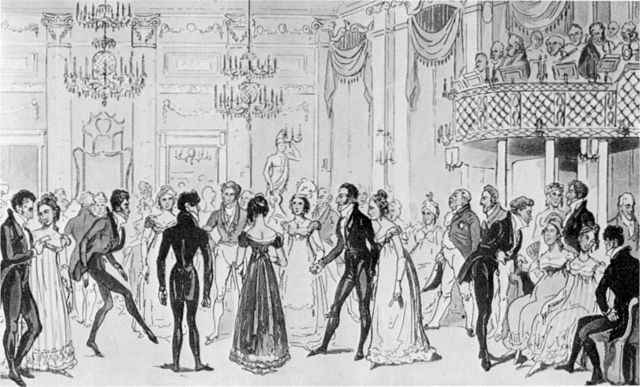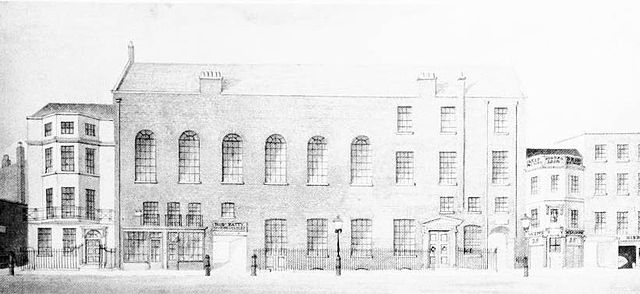In Great Britain and Ireland, especially in the 18th and 19th centuries, assembly rooms were gathering places for members of the higher social classes open to members of both sexes. At that time most entertaining was done at home and there were few public places of entertainment open to both sexes besides theatres. Upper class men had more options, including coffee houses and later gentlemen's clubs.
The Assembly Rooms, Bath
Blue Plaque, The Assembly Rooms, Assembly Street, Leeds
Almack's was the name of a number of establishments and social clubs in London between the 18th and 20th centuries. Two of the social clubs would go on to fame as Brooks's and Boodle's. Almack's most famous establishment was based in assembly rooms on King Street, St James's, and was one of a limited number of upper-class mixed-sex public social venues in the British capital in an era when the most important venues for the hectic social season were the grand houses of the aristocracy. The site of the club, Almack's Assembly Rooms or Willis's Rooms, has become retrospectively interchangeable with the club, though for much of the club's lifetime, the rooms offered a variety of other entertainments with no connection to the club.
London's high society at Almack's
The building was unpretentious.
Longitude and Latitude of St Petersburgh, a caricature of Countess Lieven and a shorter and broader dance partner by George Cruikshank
The First Quadrille at Almack's: a French print supposedly representing Lady Jersey, Lady Worcester, Lord Worcester and Clanronald Macdonald, though Gronow says it was danced by Lady Jersey, Lady Susan Ryder, Miss Montgomery and Lady Harriet Butler, with the Count St Aldegonde, Mr Montagu, Mr Montgomery and Mr Charles Standish.






